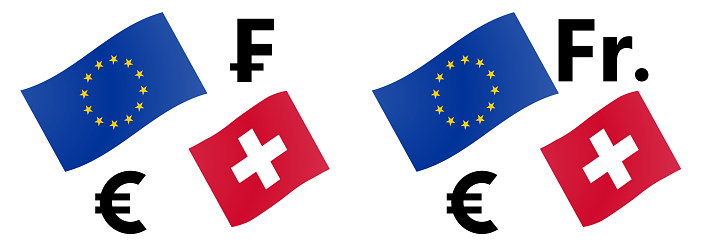Yesterday’s US session was a bit choppy and mixed; with the S&P 500 ending the day flat to close at 4524, the Dow falling about 0.1% and the Nasdaq 100 gaining about 0.2%. US data dominated the headlines; ADP’s August national employment change estimate came in well below expectations for 613K at 374K and the employment subindex in the August ISM Manufacturing PMI dropped back under 50 (implying a contraction in employment in the sector). Both increase the risk of disappointment from this Friday’s jobs report, which could have dovish implications for the Fed’s QE tapering plans (i.e. delaying the taper announcement for a few months, for example). US yields dropped as a result of this, with the 10-year falling back under 1.30%, and this may have offered the long-term interest rate sensitive Nasdaq 100 some support. More broadly, worse than expected US jobs data that results in a more cautious approach to QE tapering from the Fed is likely to be taken as a positive for stock markets.
On an optimistic note, the ISM manufacturing survey was otherwise broadly positive, with the headline index rising to 59.9 from 59.5, defying expectations for a fall to 58.6, the new orders subindex (seen as a good lead indicator as to where the index is headed next) rising to 66.7 from 64.9 and, finally, the prices paid index falling back under 80 from above 85 last month (though input inflation in the sector remains a concern, seeing the pace of price gains moderate should be taken as a positive). Net-net, the report will ease some concerns about a Covid-19 induced slowdown in the US economy, but before concluding that the economy held up better than expected in August, we must first see the August labour market report (out tomorrow) and the August ISM Services PMI survey (out next week). Amid a lack of fresh fundamental catalysts since the release of this data, major US index futures are trading with a modestly positive bias this morning, with S&P 500, Dow and Nasdaq 100 futures each up about 0.2%, with traders in wait and see mode ahead of fresh data release in the form of weekly US jobless claims numbers today ahead of the all-important US jobs report tomorrow. Precious metal markets are unsurprisingly also in wait-and-see mode, with spot gold hovering within this week’s ranges in the mid-$1810s. Crude oil, meanwhile, trades with a positive bias but with front-month WTI futures prices still just to the south of the $69.00 level in wake of OPEC+ unanimously agreeing (as expected) to press ahead with a planned 400K barrels per day output hike this month, a decision which the White House approved of (the White House recently called on OPEC to increase output).
Taking a look at currency markets this morning; the US dollar continues to look weak and the Dollar Index, a trade-weighted basket of US dollar exchange rates versus the currencies of the US economies top six trade partners, is currently trading just to the south of the 92.50 mark as it eyes a test of yesterday’s 92.37 lows. Yesterday’s weaker than expected ADP numbers, as well as the drop back to contraction territory in the ISM Manufacturing employment subindex, were both cited as the main factors weighing on the buck. The dollar remains at risk of seeing further losses is this Friday’s all-important NFP release comes in weaker than expected, given that (as noted) the Fed has made “substantial further progress” back towards its goal of full employment a key condition for beginning to taper its QE purchases, and a weaker labour market report means it will take longer for these conditions to be fulfilled and for the Fed to begin withdrawing stimulus.
Elsewhere, the euro and pound sterling both trade with small gains against the US dollar on the day, with EURUSD around the 1.1850 mark and at nearly one-month highs, while GBPUSD is perky but continues to struggle to move above 1.3800 – the former pair as put in a better performance than the latter thus far this week on the back of euro positive fundamental developments; Eurozone data has been bullish (including much hotter than expected August CPI) and hawkish ECB members have dominated the rhetoric and have been calling for the bank to curb its pace of bond buying after the September meeting. This has helped lift Eurozone bond yields to multi-week highs, with the German 10-year challenging the -0.35% level for the first time since mid-July, which has offered the euro support via more favourable yield differentials. Most analysts now suspect that the ECB will dial down the pace of bond-buying under its Pandemic Emergency Purchase Programme (PEPP) at its meeting next week, though analysts urge that this does not mean it will be axing the programme before its scheduled expiry date in March 2022.
Taking a quick look at the rest of the G10 currencies; a broadly positive bias to the market’s appetite for risk sees the dollar’s fellow G10 safe haven currencies JPY and CHF underperform as well. At the top of the G10 table sits NZD and AUD, both benefiting from better-than-expected trade data overnight, which saw Australia post a record trade surplus in July. Though both stronger by about 0.3% on the day, AUDUSD and NZDUSD have both failed to leapfrog psychologically important levels in the form of the 0.7400 level for the former and 0.7100 for the latter. While both currency pairs, as well as other non-US dollar G10 majors, would likely benefit from weaker than expected US data, the kiwi likely stands a better chance of outperforming than does the Aussie given that the recent Covid-19 outbreak in NZ looks to be coming under control (this is not the case yet in Australia, where authorities are now beginning to doubt the efficacy of continuing to pursue a zero covid-19 strategy), meaning the RBNZ looks on course for rate hikes soon while the RBA remains on pause for the foreseeable future.
The Day Ahead
US Weekly Jobless Claims numbers will be eyed at 1330BST, with initial claims expected to drop slightly to 345K from 353K in the week prior – confirmation of another drop back towards pre-pandemic levels should bolster confidence that the US labour market recovery is continuing at a decent pace despite the spike in Covid-19 infections in recent weeks. We also get US trade balance numbers at 1330BST (a $71B trade deficit is expected), though this is unlikely to move markets, as is Canadian trade balance numbers, set for release at the same time. Focus will then be on FOMC speak, with Bostic speaking at 1800BST and Daly speaking at 2000BST.




